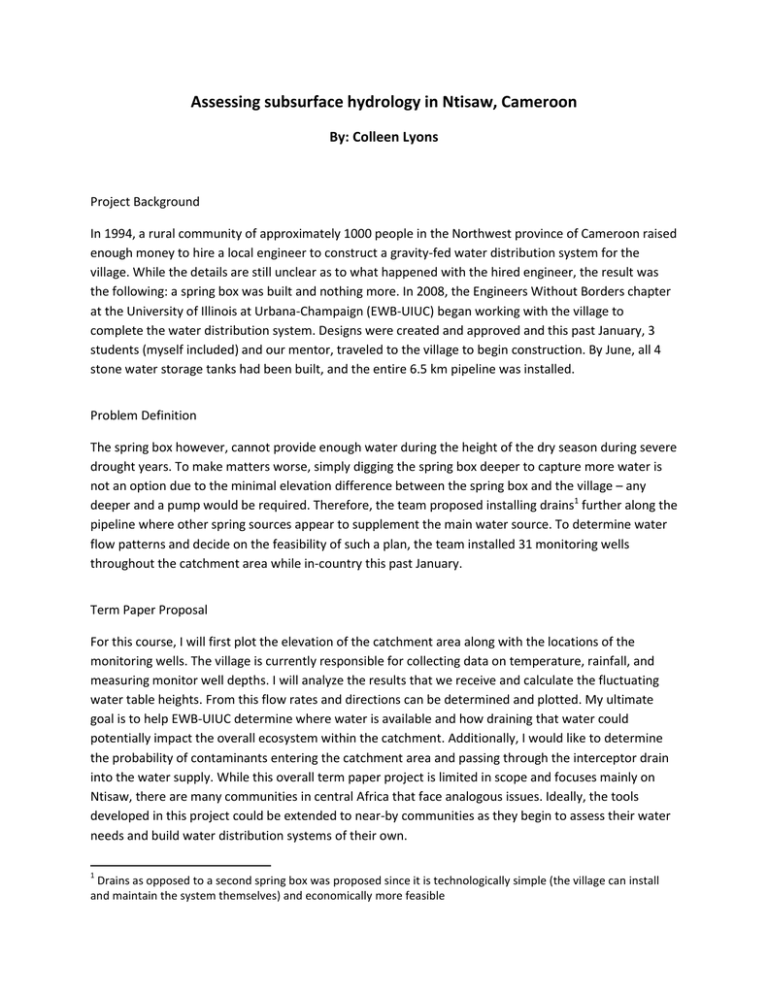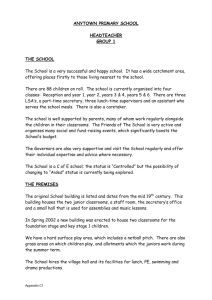Assessing subsurface hydrology in Ntisaw, Cameroon By: Colleen Lyons
advertisement

Assessing subsurface hydrology in Ntisaw, Cameroon By: Colleen Lyons Project Background In 1994, a rural community of approximately 1000 people in the Northwest province of Cameroon raised enough money to hire a local engineer to construct a gravity-fed water distribution system for the village. While the details are still unclear as to what happened with the hired engineer, the result was the following: a spring box was built and nothing more. In 2008, the Engineers Without Borders chapter at the University of Illinois at Urbana-Champaign (EWB-UIUC) began working with the village to complete the water distribution system. Designs were created and approved and this past January, 3 students (myself included) and our mentor, traveled to the village to begin construction. By June, all 4 stone water storage tanks had been built, and the entire 6.5 km pipeline was installed. Problem Definition The spring box however, cannot provide enough water during the height of the dry season during severe drought years. To make matters worse, simply digging the spring box deeper to capture more water is not an option due to the minimal elevation difference between the spring box and the village – any deeper and a pump would be required. Therefore, the team proposed installing drains1 further along the pipeline where other spring sources appear to supplement the main water source. To determine water flow patterns and decide on the feasibility of such a plan, the team installed 31 monitoring wells throughout the catchment area while in-country this past January. Term Paper Proposal For this course, I will first plot the elevation of the catchment area along with the locations of the monitoring wells. The village is currently responsible for collecting data on temperature, rainfall, and measuring monitor well depths. I will analyze the results that we receive and calculate the fluctuating water table heights. From this flow rates and directions can be determined and plotted. My ultimate goal is to help EWB-UIUC determine where water is available and how draining that water could potentially impact the overall ecosystem within the catchment. Additionally, I would like to determine the probability of contaminants entering the catchment area and passing through the interceptor drain into the water supply. While this overall term paper project is limited in scope and focuses mainly on Ntisaw, there are many communities in central Africa that face analogous issues. Ideally, the tools developed in this project could be extended to near-by communities as they begin to assess their water needs and build water distribution systems of their own. 1 Drains as opposed to a second spring box was proposed since it is technologically simple (the village can install and maintain the system themselves) and economically more feasible





